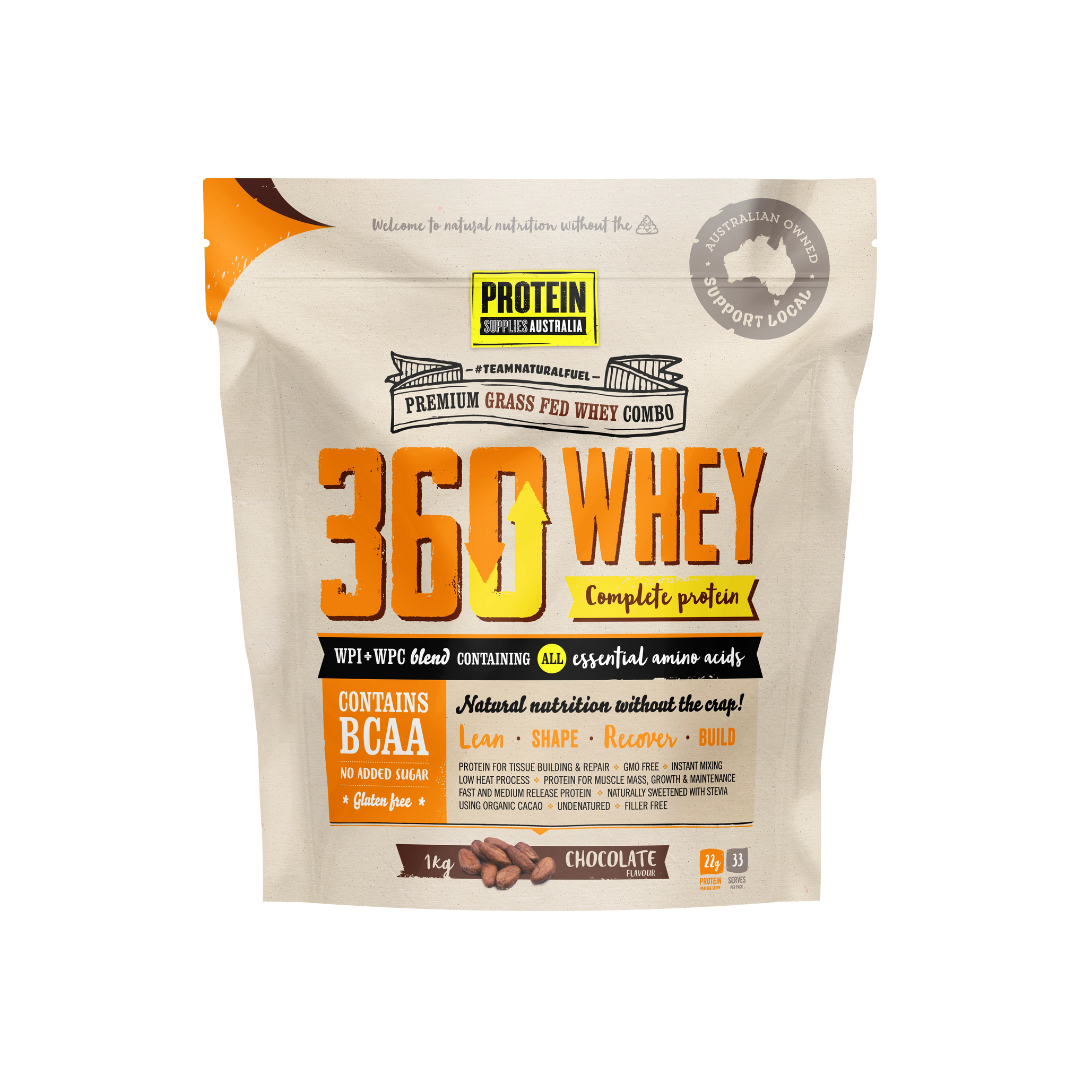In the ever-evolving fitness industry, two types of protein supplements continue to dominate the shelves: casein protein and whey protein. Both are considered complete proteins, meaning they contain all nine essential amino acids required for optimal body function and muscle protein synthesis.
Yet, despite their similar origins in the cheese making process, they differ significantly in structure, digestion rate, timing, and application. Understanding the differences between these proteins can help optimise your protein consumption for better fitness results.
This article explores the key differences between casein and whey protein to help you choose the best protein type for your fitness goals and overall health.
Casein and Whey: Two Proteins From One Source
Both casein protein and whey protein are derived from milk. During cheesemaking, enzymes separate whey, the liquid portion, from casein, which forms the solid curds. These curds can be processed into micellar casein or casein protein powder, while the liquid is purified into whey protein isolate or whey concentrate.
Despite sharing a source, they act differently within the body due to their distinct protein digestion speeds. Understanding their mechanisms can guide better protein consumption strategies based on timing, goal, and training intensity.
Amino Acid Profiles and Protein Quality
When it comes to amino acid profiles, both whey and casein proteins offer unique benefits that cater to different fitness goals. Whey protein is particularly rich in branched-chain amino acids (BCAAs), especially leucine, which is crucial for muscle protein synthesis and muscle growth. This makes whey an excellent choice for those looking to maximise their muscle-building potential.
On the other hand, casein protein boasts a higher concentration of glutamine, an amino acid that plays a significant role in supporting immune function and aiding in muscle recovery. This makes casein a valuable addition to your diet, especially if you’re looking to enhance your overall health and recovery.
Both whey and casein are considered high-quality proteins as they contain all the essential amino acids necessary for human nutrition. However, the amino acid profile of whey protein is more similar to that of human muscle tissue, making it particularly effective for muscle repair and growth.
The protein efficiency ratio (PER) is another measure of protein quality, indicating the ratio of weight gain to protein intake. Whey protein has a higher PER compared to casein, underscoring its superior ability to promote muscle growth and repair. However, casein’s slower digestion rate provides a more sustained release of amino acids, making it ideal for prolonged muscle support and recovery.
Ultimately, the choice between whey and casein protein depends on your individual fitness goals and nutritional needs. Whether you aim for immediate muscle gains or long-term recovery, understanding the unique benefits of each protein can help you make an informed decision.
Digestion Rate and Absorption: Slow Digesting Protein vs. Fast Release
The main difference between casein protein vs whey lies in their digestion rate. Whey protein is a rapidly digested protein, quickly spiking amino acid levels in the bloodstream, making it ideal for post workout recovery. In contrast, casein forms a gel-like substance in the stomach, slowing down digestion and enabling a prolonged release of amino acids over a longer period.
This slow digesting protein characteristic of casein makes it perfect before bed, when the body enters a fasting state. It provides a gradual release of nutrients to help prevent muscle breakdown and promote muscle maintenance during overnight recovery.
Muscle Growth, Recovery & Protein Timing
Both whey and casein contribute significantly to muscle growth and post workout recovery, but in different ways. Whey, particularly whey protein isolate, has a high leucine content, one of the branched chain amino acids (BCAAs) known for triggering muscle protein synthesis. It’s the go-to protein supplement for immediate recovery after resistance exercise.
On the other hand, casein is better at supporting postprandial protein retention—an independent regulating factor for muscle building. Its slow release provides amino acids over time, making it ideal for periods between meals or before sleep.
For optimal results, many athletes incorporate both: whey after training and casein before bed, supporting muscle recovery, muscle strength, and long-term muscle maintenance.
Unique Benefits of Each Protein Type
Casein Protein Benefits
-
Ideal for slow release and sustained recovery
-
May reduce muscle soreness due to anti-catabolic effects
-
Supports nighttime muscle repair
-
Delivers complete proteins with high calcium content
Whey Protein Benefits
-
Promotes rapid muscle protein synthesis post-exercise
-
Boosts immune function through bioactive peptides
-
Easy to mix and digest—great for shakes
-
Typically tastes better and blends smoother
Casein and Whey Protein Powders
Both casein and whey protein powders are staples in the fitness community, each offering distinct advantages. Whey protein powder is often favored for its rapid digestion rate and high bioavailability of amino acids, making it an excellent choice for a post-workout supplement to promote muscle recovery and growth.
In contrast, casein protein powder is known for its slow digestion rate, providing a sustained release of amino acids. This makes it ideal for consumption before bedtime, ensuring a steady supply of nutrients to your muscles throughout the night.
Whey protein isolate is a highly filtered form of whey protein, offering a higher protein content with lower fat and lactose levels. This makes it a great option for those looking to maximize protein intake while minimizing additional calories. On the other hand, micellar casein is a type of casein protein extracted through microfiltration, resulting in a high-quality protein with a slow digestion rate.
Both whey and casein protein powders can be used in combination with other supplements to enhance their benefits. For instance, whey protein powder is often paired with creatine and BCAAs to boost muscle growth and performance. Similarly, casein protein powder can be combined with glutamine and HMB to support muscle recovery and immune function.
Ultimately, the choice between whey and casein protein powder depends on your fitness goals and nutritional needs. Whether you need a quick protein boost after a workout or sustained muscle support overnight, understanding the unique properties of each protein powder can help you optimise your protein supplementation strategy.
Casein Protein vs Whey: Which Should You Choose?
|
Feature |
Whey Protein |
Casein Protein |
|---|---|---|
|
Source |
Byproduct of cheese making |
Byproduct of cheese making |
|
Digestion Rate |
Rapid |
Slow |
|
Best Timing |
Post-workout |
Before bed or during fasting |
|
Leucine Content |
Higher |
Moderate |
|
Satiety Effect |
Moderate |
High |
|
Muscle Protein Synthesis |
Strong immediate effect |
Sustained release effect |
|
Ideal Use Case |
Quick recovery, immediate fuel |
Overnight recovery, long fasting |
|
Common Form |
Whey Protein Isolate, Concentrate |
Micellar Casein, Casein Protein Powder |
|
Taste and Texture |
Smooth, easy to mix |
Thicker, slower to mix |
|
Cost |
Generally lower |
Often slightly higher |
The answer depends on your fitness goals, routine, and dietary needs:
-
For immediate recovery, choose whey protein—preferably whey isolate for purity.
-
For overnight support, go with casein protein powder.
-
To cover both short and long-term protein supplementation, consider using a blend or alternate based on protein timing throughout the day.
As the American Journal of Clinical Nutrition and the International Society of Sports Nutrition emphasise, your total protein consumption is ultimately more important than any single protein powder type. Balance your intake based on your training and lifestyle.








What Is Type 1 Collagen, Type 2 & 3?
What is BCAA? - Benefits of Branched-Chain Amino Acids